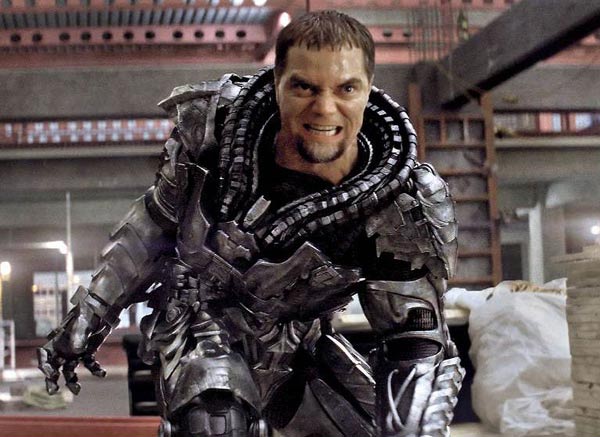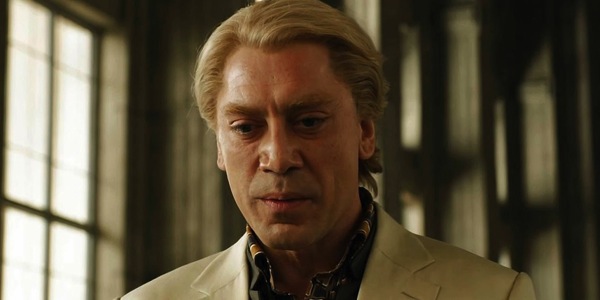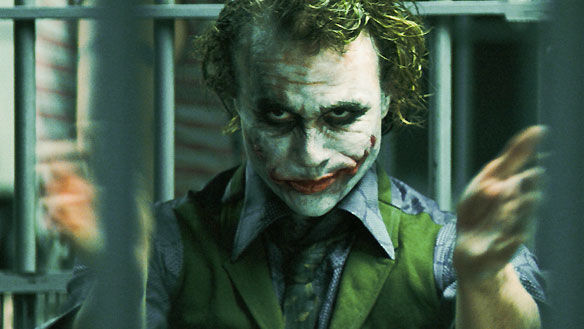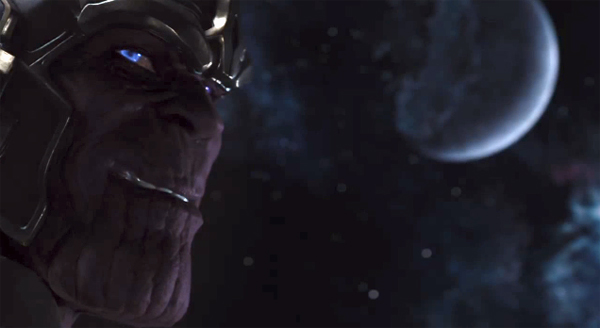Beyond Diabolical: Hollywood’s New Breed of Supervillain

Wanting to destroy the world just doesn’t cut it these days. Wealth, power and greed? Kid stuff.
As Heath Ledger’s Joker said, “this city deserves a better class of criminal, and I’m gonna give it to them.” Who knew that by “city” he meant Hollywood?
Fittingly, Joker was indeed a game-changer in the world of blockbuster films. Christopher Nolan and co. turned Batman’s greatest nemesis into a seemingly omnipotent agent of chaos, a movie villain whose mental prowess dwarfed all who came before him.
The ripple effect of the Joker on the world of superhero films and major blockbuster franchise villains has been impressive. Just this past weekend we witnessed expert villainy from Benedict Cumberbatch in “Star Trek Into Darkness” and even Ben Kingsley’s The Mandarin (known as Tony Stark’s greatest foe) in “Iron Man 3” posed a similarly formidable threat—albeit that one’s a little complicated.
In a few weeks, Superman gets reintroduced to the modern movie world, but no, he won’t be facing off with his arch nemesis Lex Luthor, but instead the ruthless Kryptonian radical General Zod (Michael Shannon), an enemy whose powers obviously match Superman’s inch for inch.
Outside of the superhero genre, we’ve seen similar villains. In 2011, “Sherlock Holmes: A Game of Shadows” saw Holmes’ storied rival on the big screen engaging in intellectual rivalry; James Bond had to go up against a devious mastermind in Raul Silva in last year’s “Skyfall”; even the Men in Black faced a menacing (and surprisingly effective) threat in Boris the Animal (Jemaine Clement) in “Men in Black III.”
With The Avengers next set to face Thanos, one of the most powerful villains in the Marvel Comics canon, in 2015, it’s safe to say the number of truly imposing baddies is only going up from here.
So there’s the evidence, but what’s the reason? Blockbusters don’t need amazing supervillains to be quality, entertaining films. Many hold “Iron Man” among the best superhero films, and few will attribute that to Jeff Bridges’ Obadiah Stane. Even something more recent, such as the 2011 hit “Mission: Impossible – Ghost Protocol” featured a villain played by Michael Nyqvist who wanted nothing more than to start nuclear war.
Great villains, however, put films into the next echelon of entertainment. They add an element of mystery (or in the case of recent blockbusters, unpredictable chaos) that ups the stakes of a film.
When you think about it, it’s amazing that we still watch movies with stories centered on good vs. evil when we know who will win. (Hint: it’s not evil). The simple explanation for this is that there’s something thrilling about getting there, and great villains (coupled with great writing) complicate the “getting there” part immensely. “Star Trek Into Darkness” does this perfectly.
But this doesn’t exactly explain why we laud great performances from actors playing villains. We are absolutely engrossed by great bad guys, even the best of us. I’m talking Academy of Motion Picture Arts & Sciences voters, for one. In addition to Ledger’s posthumous Oscar win, Javier Bardem (“No Country for Old Men”), Christoph Waltz (“Inglourious Basterds”), Anthony Hopkins (“Silence of the Lambs”), Kevin Spacey (“The Usual Suspects”) and more have won Academy Awards for playing villains, and dozens of others have won for playing immoral characters.
The answer involves a study of psychology more than film, but I’d venture to say it’s human instinct to be drawn to a psychology that we can’t empathize with. We identify with heroes, not villains, so the ones we don’t understand are the ones that intrigue us. On top of that, the ones we struggle to understand the most—whose motivations are a mystery—those are the very best movie villains.
Sure, the average poorly crafted villain has motivations that are a total mystery—they want to be evil for the sake of being evil. It’s the performance that separates these run-of-the-mill baddies from the greatest of all time.
Let’s got back to that list a few paragraphs up: Anton Chigurh, Hans Landa, Hannibal Lecter, Keyser Soze, Joker—each is unforgettable, and each has motivations that are unclear or nonexistent, for most if not all of the film. We don’t understand them because their personal motivation has been consciously left out of the script.
Ledger’s Joker is the perfect example. “Some men just want to watch the world burn,” Michael Caine’s Alfred says. Joker wants to see humanity cave to its worst instincts, but we don’t know that for a long time thanks to the writing. Ledger’s performance gives this character–who’s unlikely to exist in the real—world a definite presence.
These villains add an element of complete unpredictability to their respective films, and unpredictability in a world of “good triumphs over evil” stories is a valuable commodity. Actors who give great villain performances can seize on this unpredictability. They make the implausible seem plausible by breathing a convincing sinister life into their roles.
Going with “mystery motivation” and finding an actor who can make it work also saves a script from having to do a lot of work. The only other way to create an effective movie villain is by giving the villain a backstory or origin story that justifies his villainy. This can be challenging because audiences will respond differently to the bad guy’s motivation. Either you will be convinced that the backstory provides adequate motivation for the villain to do evil things, or you won’t. Once a film has made that motivation clear, the film will either sink or swim from there. It’s worth striving for, however, as an effectively motivated villain can be incredibly moving to a viewer because it adds a real complexity by making us feel a bit conflicted about the character.
At the start of the 21st Century, the blockbuster movie market became saturated with films centered on singular heroes. Now that we live in the world of the sequels to and reboots of these films, that market is great for movie villains. After the hero beats the first two or three villains, there needs to be a more convincing reason we might doubt our hero will survive the next installment, so upping the severity of the villain is the surest way to test our hero’s meddle.
Considering the amount of superhero films and sequels shows no sign of a downward trajectory anytime soon (thanks in large part to “The Avengers”), I think it’s obvious that screenwriters are going to need to get craftier and craftier with the villains they write, or at least the obstacles they place in a hero’s path. As great as the “unpredictable intellectual mastermind/agent of chaos” archetype is, it can’t be used for every film and be a success (supposing there aren’t dozens of amazing villain actors out there).
At the same time, we’re still talking about old-fashioned good vs. evil here, so as long as the villains stay unpredictable and great actors harness their energy, we’ve likely not yet seen some of the best movie villains.








1 Comment
Very insightful article. I always enjoy the intense opposition created by a higher class of villain. I especially like your commentary on the scripting of the villain’s backstory. I found Loki from Thor and The Avengers to be one of my least favorite villains, and this was based on the backstory. A troubled youth who never felt good enough for those he loved most. It’s easy to identify with for some but he just came off as childish unstable. He had no real, lifelong conviction driving him to oppose the hero. As a villain I found him unworthy of the great power he wielded.